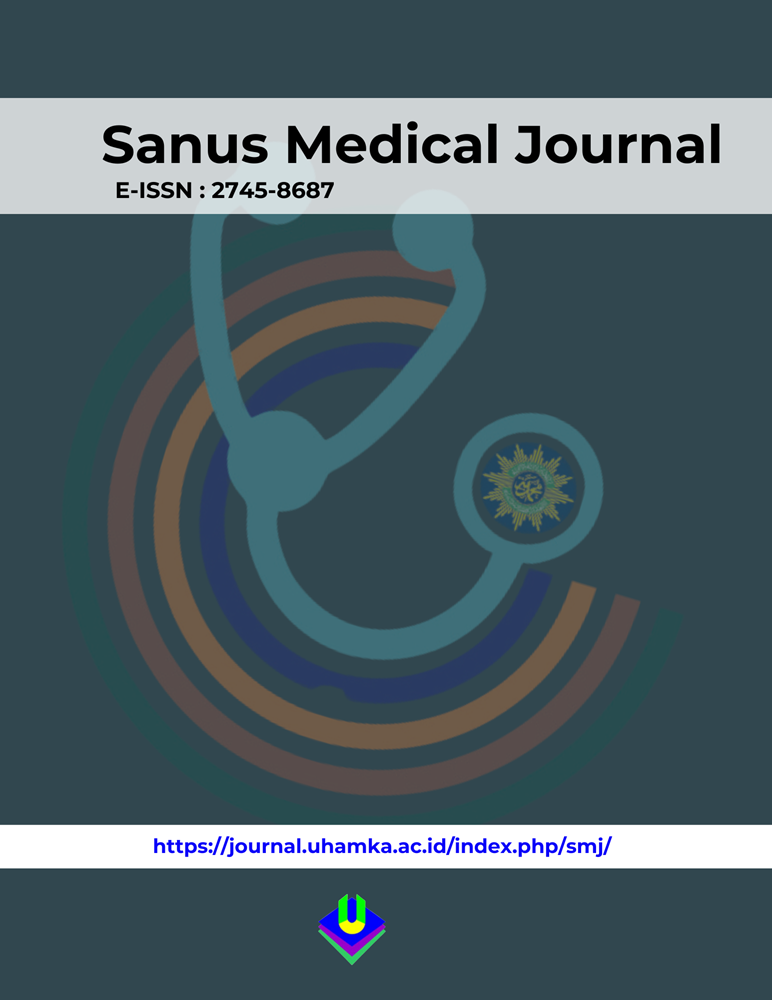Main Article Content
Abstract
Tuberculosis (TB) is caused by Mycobacterium tuberculosis and can infect various organs, including the lungs and extrapulmonary. Standard treatment uses anti-TB drugs (OAT) such as rifampicin, isoniazid, ethambutol, and pyrazinamide, which can cause hepatotoxic side effects or Drug-Induced Liver Injury (DILI). This study aims to analyze the incidence of DILI in TB patients receiving OAT FDC therapy. The method used is a case study on a 24-year-old patient who experienced nausea, vomiting, and jaundice after receiving FDC therapy. Laboratory examinations showed increased ALT and AST, indicating DILI. Data were analyzed with periodic monitoring of liver enzymes and clinical changes. The results showed that temporary cessation of OAT and administration of hepatoprotective curcuma supplements were effective in improving liver function. This study suggests routine liver enzyme examination in patients receiving OAT therapy to prevent DILI. Alternative OAT therapy can be considered in patients with severe DILI.
Tuberkulosis (TBC) disebabkan oleh Mycobacterium tuberculosis dan dapat menginfeksi berbagai organ, termasuk paru dan ekstra paru. Pengobatan standar menggunakan obat anti-TBC (OAT) seperti rifampisin, isoniazid, ethambutol, dan pyrazinamid, yang dapat menyebabkan efek samping hepatotoksik atau Drug-Induced Liver Injury (DILI). Penelitian ini bertujuan untuk menganalisis kejadian DILI pada pasien TBC yang menerima terapi OAT FDC. Metode yang digunakan adalah studi kasus pada pasien berusia 24 tahun yang mengalami mual, muntah, dan ikterus setelah menerima terapi FDC. Pemeriksaan laboratorium menunjukkan peningkatan ALT dan AST, yang mengindikasikan DILI. Data dianalisis dengan pemantauan berkala enzim hati dan perubahan klinis. Hasil menunjukkan bahwa penghentian sementara OAT dan pemberian suplemen hepatoprotektor curcuma efektif dalam perbaikan fungsi hati. Penelitian ini menyarankan pemeriksaan rutin enzim hati pada pasien yang menerima terapi OAT untuk mencegah DILI. Alternatif terapi OAT dapat dipertimbangkan pada pasien dengan DILI berat.
Keywords
Article Details

This work is licensed under a Creative Commons Attribution 4.0 International License.
References
- Kumar, P S, Vidya R, Tabassum, Jegeer M. Anti-tuberculosis treatmen: induced hepatotoxicity-a case report. eJIFCC, vol 31 no. 3. pp 242-247.
- Abbara A, Chitty S, Roe J K, Gahni R, Collin S. M etc. Drug-induced liver injury from antituberculous treatment: a retrospective study from a large TB centre in UK. BMC Infectious Diseases (2017, 17:231. DOI 10.1186/s12879-017-2330-z
- Zhao H, Wang Y, Zhang T, Wang q, Xie W. Drug-induced liver injury from Anti- Tuberculosis treatmen: A Retrospective Cohot Study. Med Sci Monit< 2020: 26: e9203550. DOI: 10.12659/MSM.920350
- Octariany O, Gusrizal V. A Case Report: Tuberculosis Drug Induced Liver Injury: A Case Report. Sjurnal politeknikpratama.ac.id, Vol 2 No. 3, 2024. e-ISSN: 2963-2005.
- Goro R R, Suryana K. Drug-induced liver injury after anti tuberculosis drugs
- administration, how to diagnose? A case report. Int J Adv Med. 2022 Sep; 9(9):951- 954
References
Kumar, P S, Vidya R, Tabassum, Jegeer M. Anti-tuberculosis treatmen: induced hepatotoxicity-a case report. eJIFCC, vol 31 no. 3. pp 242-247.
Abbara A, Chitty S, Roe J K, Gahni R, Collin S. M etc. Drug-induced liver injury from antituberculous treatment: a retrospective study from a large TB centre in UK. BMC Infectious Diseases (2017, 17:231. DOI 10.1186/s12879-017-2330-z
Zhao H, Wang Y, Zhang T, Wang q, Xie W. Drug-induced liver injury from Anti- Tuberculosis treatmen: A Retrospective Cohot Study. Med Sci Monit< 2020: 26: e9203550. DOI: 10.12659/MSM.920350
Octariany O, Gusrizal V. A Case Report: Tuberculosis Drug Induced Liver Injury: A Case Report. Sjurnal politeknikpratama.ac.id, Vol 2 No. 3, 2024. e-ISSN: 2963-2005.
Goro R R, Suryana K. Drug-induced liver injury after anti tuberculosis drugs
administration, how to diagnose? A case report. Int J Adv Med. 2022 Sep; 9(9):951- 954

